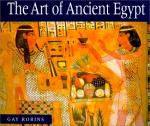|
This section contains 901 words (approx. 4 pages at 300 words per page) |

|
Parts of the Tomb. Tombs helped ensure rebirth into the next world through design and decoration. Egyptian tombs were divided between a chapel in a superstructure and the actual burial place in a substructure. These two parts were constant, though there were many changes and developments in tomb plans over the course of three thousand years.
Superstructure Types. The Egyptians used three different structures for tomb chapels throughout their history. The mastaba was a freestanding structure built of stone; the rock-cut tomb was cut into the side of a mountain; and the temple-tomb was similar in plan to a temple. Mastabas and rock-cut tombs were used in all periods. Yet, the mastaba is considered characteristic of the Early Dynastic Period and Old Kingdom. Rock-cut tombs became most common in the Middle and New Kingdoms. Temple-tombs were most popular in the Late Period, but...
|
This section contains 901 words (approx. 4 pages at 300 words per page) |

|




